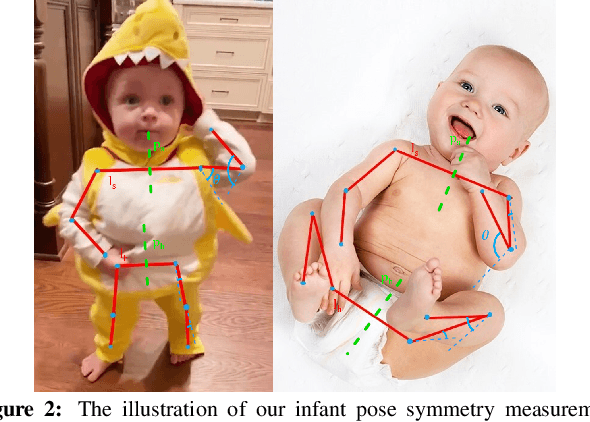Lingfei Luan
Challenges in Video-Based Infant Action Recognition: A Critical Examination of the State of the Art
Nov 21, 2023Abstract:Automated human action recognition, a burgeoning field within computer vision, boasts diverse applications spanning surveillance, security, human-computer interaction, tele-health, and sports analysis. Precise action recognition in infants serves a multitude of pivotal purposes, encompassing safety monitoring, developmental milestone tracking, early intervention for developmental delays, fostering parent-infant bonds, advancing computer-aided diagnostics, and contributing to the scientific comprehension of child development. This paper delves into the intricacies of infant action recognition, a domain that has remained relatively uncharted despite the accomplishments in adult action recognition. In this study, we introduce a groundbreaking dataset called ``InfActPrimitive'', encompassing five significant infant milestone action categories, and we incorporate specialized preprocessing for infant data. We conducted an extensive comparative analysis employing cutting-edge skeleton-based action recognition models using this dataset. Our findings reveal that, although the PoseC3D model achieves the highest accuracy at approximately 71%, the remaining models struggle to accurately capture the dynamics of infant actions. This highlights a substantial knowledge gap between infant and adult action recognition domains and the urgent need for data-efficient pipeline models.
Exploring the Cognitive Dynamics of Artificial Intelligence in the Post-COVID-19 and Learning 3.0 Era: A Case Study of ChatGPT
Feb 03, 2023Abstract:The emergence of artificial intelligence has incited a paradigm shift across the spectrum of human endeavors, with ChatGPT serving as a catalyst for the transformation of various established domains, including but not limited to education, journalism, security, and ethics. In the post-pandemic era, the widespread adoption of remote work has prompted the educational sector to reassess conventional pedagogical methods. This paper is to scrutinize the underlying psychological principles of ChatGPT, delve into the factors that captivate user attention, and implicate its ramifications on the future of learning. The ultimate objective of this study is to instigate a scholarly discourse on the interplay between technological advancements in education and the evolution of human learning patterns, raising the question of whether technology is driving human evolution or vice versa.
Computer Vision to the Rescue: Infant Postural Symmetry Estimation from Incongruent Annotations
Jul 19, 2022



Abstract:Bilateral postural symmetry plays a key role as a potential risk marker for autism spectrum disorder (ASD) and as a symptom of congenital muscular torticollis (CMT) in infants, but current methods of assessing symmetry require laborious clinical expert assessments. In this paper, we develop a computer vision based infant symmetry assessment system, leveraging 3D human pose estimation for infants. Evaluation and calibration of our system against ground truth assessments is complicated by our findings from a survey of human ratings of angle and symmetry, that such ratings exhibit low inter-rater reliability. To rectify this, we develop a Bayesian estimator of the ground truth derived from a probabilistic graphical model of fallible human raters. We show that the 3D infant pose estimation model can achieve 68% area under the receiver operating characteristic curve performance in predicting the Bayesian aggregate labels, compared to only 61% from a 2D infant pose estimation model and 60% from a 3D adult pose estimation model, highlighting the importance of 3D poses and infant domain knowledge in assessing infant body symmetry. Our survey analysis also suggests that human ratings are susceptible to higher levels of bias and inconsistency, and hence our final 3D pose-based symmetry assessment system is calibrated but not directly supervised by Bayesian aggregate human ratings, yielding higher levels of consistency and lower levels of inter-limb assessment bias.
 Add to Chrome
Add to Chrome Add to Firefox
Add to Firefox Add to Edge
Add to Edge